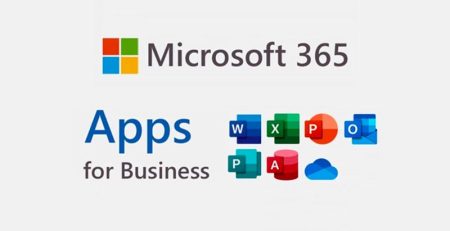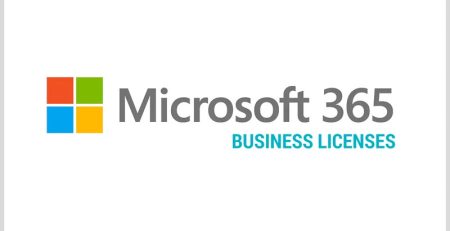Tips for Running an Effective Cybersecurity Awareness Campaign
Editor’s note: In recognition of this October, we are publishing a series of blog posts dedicated to educating and informing you about cybersecurity practices. This is the third in a series of posts. Below, you can find a list of links to the rest of the series:
- What is a Pig Butchering Scam and How Do You Protect Yourself?
- 6 Conditional Access Policies You Should Turn on Now
- What is Quishing and How Do You Protect Yourself?
- Early Warning Signs Your Employees Need to Look Out for and Report to IT
- My Dad Lost Thousands of Dollars in a Romance Scam. Here’s How They Work and How to Protect Yourself
- NIST Releases New Password Rules: What Does It Mean for You?
- 7 Reasons Your Organization Needs Cybersecurity Insurance
- Why Does My Organization Need Cybersecurity Insurance and an MSP?
- Top 3 Cybersecurity Threats We Uncovered at GrrCon 2024
- Why Keeping a File with Passwords on Your Computer is a Terrible Idea
- How Do Passwords Get Hacked?
- What Happens When You Use the Phish Alert Button?
- Why Does Social Engineering Happen?
Not all cybersecurity training is built the same.
The key to a successful campaign is regular testing to reinforce security knowledge and stay up to date on the latest trends.
Of course, you don’t want to burden your employees with too much training, as security fatigue can set in.
At the technology division of Hungerford, there are five major components of our Security Training and Testing program that help our clients be prepared for any phishing attack that comes their way.
We’ll break down the five components and discuss why each is necessary to run an effective cybersecurity awareness campaign.
Baseline Assessment
The baseline component is an initial assessment to establish a starting point for measuring the effectiveness of subsequent training.
When we onboard a new client, every employee receives a survey to determine how much they know about cybersecurity and, more specifically, identifying phishing attacks.
- Identify gaps: Every organization will have technologically savvy employees and those who aren’t so savvy, and it’s our job to figure out where the gaps are and provide the necessary training to fill in those gaps.
- No embarrassment: The goal isn’t to embarrass those who lack the knowledge but rather to determine strengths and weaknesses that will guide future training.
Initial Training/New Hire Training
Once we’ve established a baseline, we transition to initial training or new hire training.
This is the first training session for current employees and all future hires, and is the building block for future training.
- Phishing Alert Button: Introduce the email plugin tool for reporting suspicious emails.
- Email security overview: We provide an overview of email security awareness and best practices.
- Proactive measures: When an email is reported, a ticket is automatically created and reviewed by our support team. If we determine an email is a phishing attack, we can remove the same email from the inboxes of others in your organization to ensure no one falls for the attack.
Monthly Phishing Testing
The next step is monthly phishing testing. It’s important to conduct regular email security tests to continuously evaluate employee awareness and vigilance.
- Simulated phishing attacks: We send fake phishing emails to all employees at least once per month.
- Track results: We monitor who reports and who fails the test.
- Immediate feedback: Employees will be notified immediately if they interact with a test phishing email, pass or fail.
“Remember, training isn’t a one-time event. Technology evolves and so do the tactics of cybercriminals. Regular training sessions are essential to keep employees updated with the latest trends and reinforce basic security protocols.”
Quarterly Training
Quarterly training consists of in-depth sessions to update and reinforce email security knowledge.
- Regular updates: The bad guys are constantly inventing new ways to attack. We conduct training quarterly to keep employees informed of emerging phishing trends.
- Consistent reminders: Quarterly training ensures employees are getting regular reminders to maintain vigilance.
- Optimal frequency: We’ve found that conducting training sessions four times per year is the best balance for maintaining awareness without overburdening employees with time spent not working.
Remedial Training
Remedial training is designed for individuals who fail a monthly test.
- Focused retraining: We ensure employees know what signs to look for.
- Encourage reporting: We emphasize the importance of reporting suspicious emails.
- Positive reinforcement: It reminds employees that it’s better to be safe than sorry.
By following these five components, you can ensure your organization is running an effective cybersecurity awareness campaign.
Shape Your Security Awareness Program
If your organization hasn’t had any formal security awareness training, now is the perfect time to start. Establishing a proactive training program can significantly reduce the risk of falling victim to cyberattacks.
If you have already implemented security awareness training, but your employees aren’t taking it seriously, the information provided here should serve as a wake-up call. Use these insights to reinforce the importance of vigilance and proper security practices to keep your organization safe.
Remember, training isn’t a one-time event. Technology evolves and so do the tactics of cybercriminals. Regular training sessions are essential to keep employees updated with the latest trends and reinforce basic security protocols.
Security Awareness Training Can Save Your Organization
Effective security awareness training can be the difference between a minor security incident and a major breach.
If you’d like to learn more about how our Security Awareness Training can protect your organization from cybersecurity threats, contact us here. Our team can help ensure your sensitive data remains secure.
Did you like this blog? You can subscribe to our newsletter to receive a weekly email with our latest blog posts.











